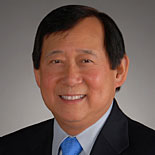Least Invasive Access to Lumbar Spine Gaining Traction World Wide
I’m pleased to report that the least invasive access to the lumbar spine is gaining traction and interest world wide as I return from a very successful trip to Bahia, Brazil for the WCMISST III meeting. Congratulations to Pil Sun Choi, who pulled off a meeting that was attended by more surgeons than the first meeting in Hawaii, and was enjoyed immensely by those who attended and took the cruise down the Amazon. My concern is that each meeting as big as this one must have both attendee and vendor support, as it requires both support and money to have a successful meeting, or the momentum will stall.
After WCMISST, I returned to Phoenix for a well-received, small, three-day course on transforaminal endoscopic surgery that covered the spectrum of pain management to transforaminal fusion and neuromodulation with a DRG implant.
I then commenced a two-week tour of China in Beijing, Quanzhou, and Suzhou. The Beijing meeting was attended by about 1,000 physicians at the First China Forum of Pain Medicine, an International Pain meeting sponsored by a Neurosurgical Group with expertise in Neuromodulation for Pain.
The First International Chinese Spine Society (ICSS) Conference was held in Suzhou, China, led by Dr. Hulin Yang and Hansen Yuan, attended by about 700 Chinese spine surgeons. I also travelled to Quanzhou to provide a seminar and performed one endoscopic surgery for an extruded HNP at L5-S1 and a DiscFx® procedure for discogenic pain. My talks and courses on the transforaminal endoscopic approach to the lumbar spine were well received.
I will be returning to China and Korea November 14-16 for the Chinese Orthopedic Association Meeting as an international invited speaker, then KOSMISS Cadaver Workshop in Seoul, November 17-19.
Gun Choi is your new President for 2013 and Ramiro Ramirez will become the past President.
As I travel the world and attend the MIS meetings in each country and region, I see the diverse definition and focus of each sponsoring group. There is political posturing in each group, with different methods by each group who support MIS surgery, but all in their own way and with different methods, and different techniques, guided by the leaders of each group, perhaps to the detriment of a global definition of MIS surgery that recognizes the value of each technique.
There continues to be some misconceptions by each group of leaders, each with some leaders as talkers, and some others who are doers who perhaps are not credited enough for being the true pioneers in MIS surgery. I may not know them all, or even a majority of the innovative work being produced, but I see a need to see the innovative work being done to be presented in an environment that promotes participation and collegial discussion.
As an example, I credit Jean Destandeau as a surgeon who should be recognized as the father of modern transcanal and dorsal translaminar and para laminar surgery using an endoscope and dilating cannulas that he designed and made himself to access the spine.
The approach was taken up and popularized by Foley and Fessler, as well as Jho, but some who may have visited Dr. Destandeau and adopted his technique, as I did, should acknowledge his contribution in their talks.
I consider Martin Knight the pioneer of foraminal endoscopic decompression. He may still not be accepted enough by surgeons in his own country and Europe, perhaps because of his emphasis on laser, but his work is in the literature, and laser is an integral part of the procedure that is used as a tool facilitating decompression in tight spots.
I have used it for the past 15 years in a more limited fashion because my patient population tended to be significantly younger and the patients had access to traditional decompression and fusion. Now, with newer tools such as kerrisons and burrs, it should be a routine procedure to access extruded HNP, as well as central and lateral recess stenosis. Kambin and Hijikata have been given their due as pioneers for the transforaminal approach to the spine.
As for transforaminal surgery, I have been inviting presentations and debate over the outside-in technique promoted by Hoogland and his student Schubert and the inside-out philosophy and techniques promoted by Kambin and myself. I recently heard an interesting talk by Professor Zhou Yue, who is aware of and has practiced both techniques, but speaks about an in between technique that he calls the “targeted” technique, taking into consideration the patho-anatomy and the anatomic variations of each patient, but using the approach that best facilitates the surgical decompression.
President Gun Choi and I will be discussing the next IITTSS meeting in November to decide whether to hold the meeting in Seoul or Phoenix. I have decided to have regular cadaver workshops in Phoenix as long as the interest and demand continues to be strong. Stay tuned for future announcements.

